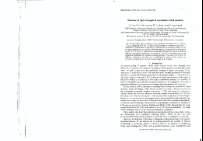Decrease in back strength in asymmetric trunk postures

Contenido multimedia no disponible por derechos de autor o por acceso restringido. Contacte con la institución para más información.
| Tag | 1 | 2 | Value |
|---|---|---|---|
| LDR | 00000nab a2200000 i 4500 | ||
| 001 | MAP20071019312 | ||
| 003 | MAP | ||
| 005 | 20080418115740.0 | ||
| 007 | hzruuu---uuuu | ||
| 008 | 940520e19920401gbr|||| | |00010|eng d | ||
| 035 | $a6800013157 | ||
| 040 | $aMAP$bspa | ||
| 084 | $a875 | ||
| 245 | 1 | 0 | $aDecrease in back strength in asymmetric trunk postures$cP. Vink... [et al.] |
| 520 | $aThis study had two goals. First, it aimed to contribute to the development of guidelines for optimal working postures. To this end, the influence of a flexed, rotated, and lateroflexed posture of the torso on the maximum force exerted by the back muscles was investigated. Second, explanations for the decrease in back strength in asymmetric trunk postures were described. A decrease in back muscle force could be due to changes in muscle length or by differences in activity of the muscles. Therefore changes in muscle length were estimated and changes in muscle activity were recorded | ||
| 650 | 1 | 1 | $0MAPA20080550653$aErgonomía |
| 650 | 1 | 1 | $0MAPA20080557348$aBiomecánica |
| 650 | 1 | 1 | $0MAPA20080572297$aFuerza muscular |
| 650 | 1 | 1 | $0MAPA20080575755$aElectromiografía |
| 650 | 1 | 1 | $0MAPA20080579579$aColumna vertebral |
| 650 | 1 | 1 | $0MAPA20080545048$aPostura |
| 700 | 1 | $0MAPA20080002756$aVink, P. | |
| 740 | 0 | $aErgonomics | |
| 773 | 0 | $tErgonomics$dLondon and Washington$gVol. 35, nº 4, April 1992 ; p. 405-416 |

